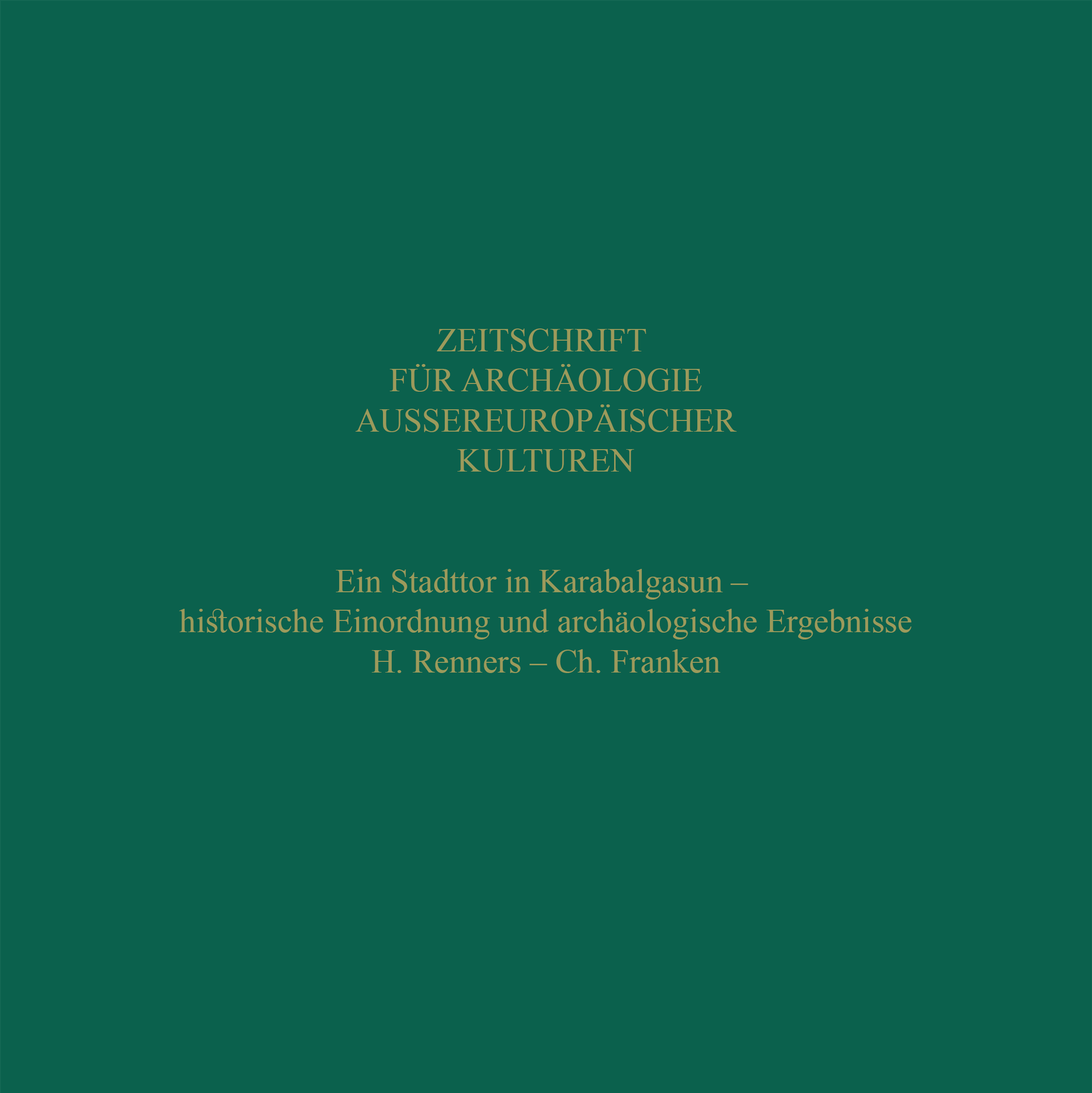Ein Stadttor in Karabalgasun – historische Einordnung und archäologische Ergebnisse
https://doi.org/10.34780/r654-4c7z
Resumen
Nearly 100 years, from 744/45 until 840 AD, the nomadic settlement Karabalgasun in the Middle Orkhon-Valley in Mongolia served as the capital of the early Uyghur Empire. While the history of the Turkic tribe is lighted by different written sources such as Chinese texts and Turkic inscriptions, the (archaeological) investigation of Karabalgasun with its more than 32 sqm size is still in its infancy. Like the old Mongolian city Karakorum, located about 30 km southeast, Karabalgasun applies as an ancient cosmopolitical centre in the steppe which benefi ted from the contacts to neighbouring peoples in political, economical and religious ways. Since the year 2007 a German-Mongolian research project concentrates on the walled urban areas HB1, HB2 and HB3 in the centre of the city. In the course of the exploration questions of urban structure, architectonical infl uences with their reception and the organization of authority within a nomadic society aimed to be analyzed. In 2012, a gate to the walled area of HB3, a presumed craftsmen quarter, could be excavated. The gap in the eroded wall once was designed with a pavilion like gatehouse resting on four stone column bases.
Der Artikel wird zeitnah als PDF verfügbar sein.




